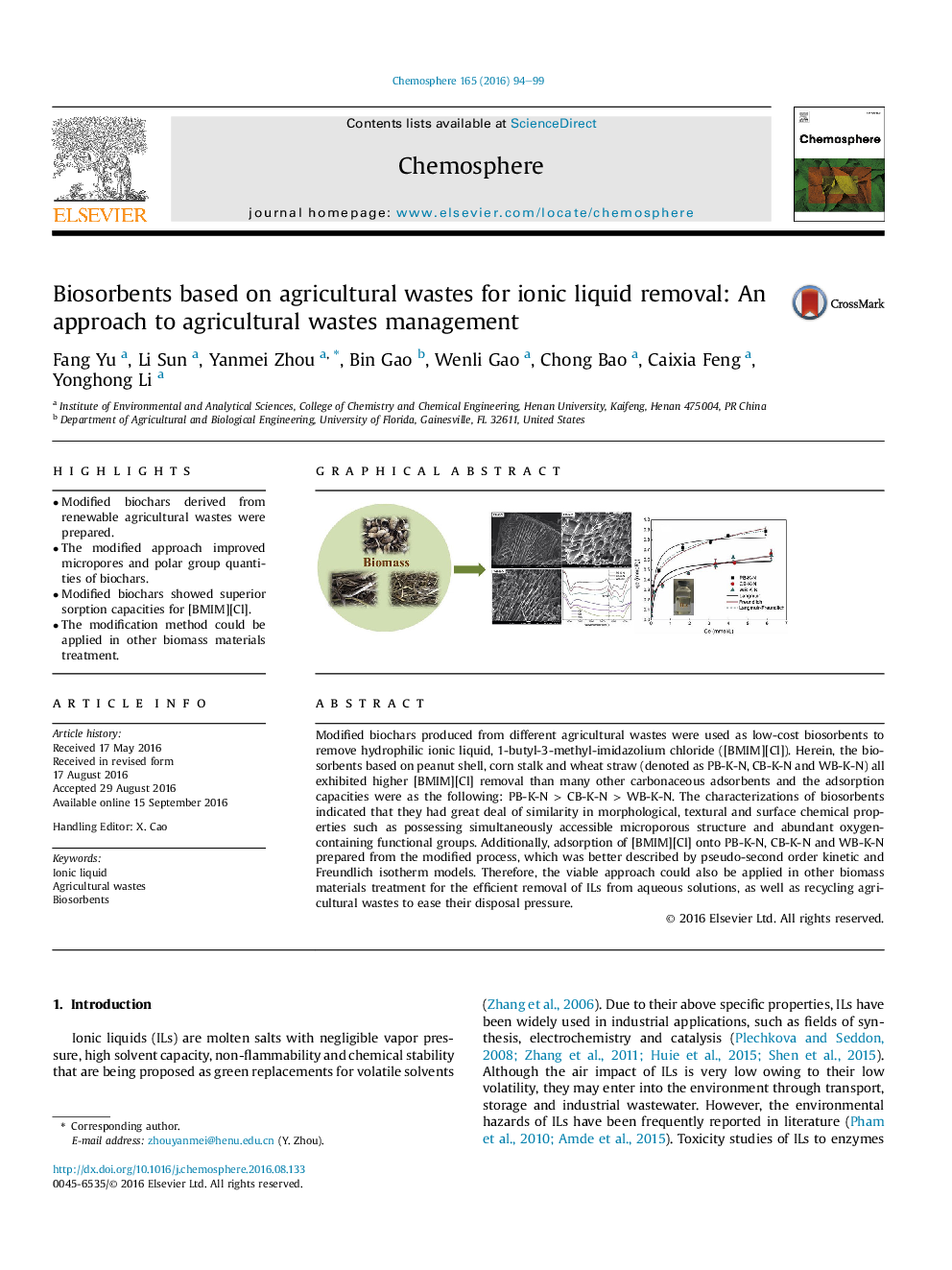| کد مقاله | کد نشریه | سال انتشار | مقاله انگلیسی | نسخه تمام متن |
|---|---|---|---|---|
| 4407290 | 1618806 | 2016 | 6 صفحه PDF | دانلود رایگان |
• Modified biochars derived from renewable agricultural wastes were prepared.
• The modified approach improved micropores and polar group quantities of biochars.
• Modified biochars showed superior sorption capacities for [BMIM][Cl].
• The modification method could be applied in other biomass materials treatment.
Modified biochars produced from different agricultural wastes were used as low-cost biosorbents to remove hydrophilic ionic liquid, 1-butyl-3-methyl-imidazolium chloride ([BMIM][Cl]). Herein, the biosorbents based on peanut shell, corn stalk and wheat straw (denoted as PB-K-N, CB-K-N and WB-K-N) all exhibited higher [BMIM][Cl] removal than many other carbonaceous adsorbents and the adsorption capacities were as the following: PB-K-N > CB-K-N > WB-K-N. The characterizations of biosorbents indicated that they had great deal of similarity in morphological, textural and surface chemical properties such as possessing simultaneously accessible microporous structure and abundant oxygen-containing functional groups. Additionally, adsorption of [BMIM][Cl] onto PB-K-N, CB-K-N and WB-K-N prepared from the modified process, which was better described by pseudo-second order kinetic and Freundlich isotherm models. Therefore, the viable approach could also be applied in other biomass materials treatment for the efficient removal of ILs from aqueous solutions, as well as recycling agricultural wastes to ease their disposal pressure.
Figure optionsDownload as PowerPoint slide
Journal: Chemosphere - Volume 165, December 2016, Pages 94–99
